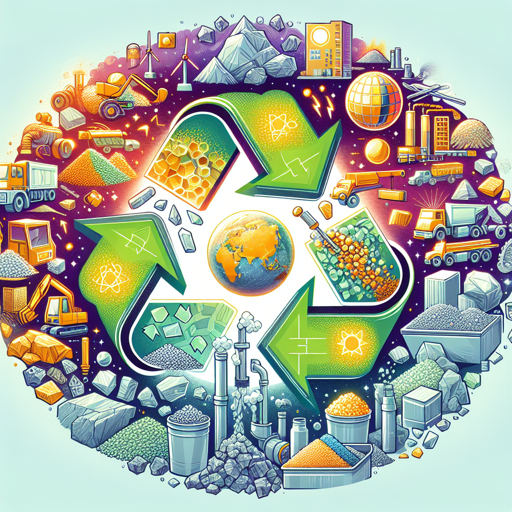Unlocking the Potential of Recycling Rare Earth Elements
Exploring the challenges and remarkable benefits of recycling rare earth elements in our modern world.

Introduction
In our technological age, rare earth elements (REEs) have become essential components for the electronics industry, from smartphones to electric vehicles. However, extracting these valuable minerals from the Earth’s crust poses significant environmental challenges. To alleviate these concerns, recycling REEs has emerged as a viable and potentially revolutionary solution.
Understanding Rare Earth Elements
Rare earth elements are a group of 17 chemically similar elements that are not actually rare but are often found dispersed in low concentrations. They are indispensable to our modern lifestyle, powering high-tech devices and renewable energy technologies.
The Importance of REEs
REEs are critical to a number of industries, including clean energy, defense, and consumer electronics. They are used in the production of magnets, batteries, catalysts, and other applications due to their unique magnetic, heat-resistant, and phosphorescent properties.
The Problem of Extraction
Extracting REEs from the Earth can be detrimental to the environment. It involves a process of crushing rocks, followed by chemical treatments to separate the REEs. This process generates a significant amount of waste and can contaminate water sources.
The Potential of Recycling REEs
As an alternative to extraction, recycling REEs can reduce environmental impact and dependence on foreign supply.
Benefits of Recycling
Recycling REEs has several benefits, from reducing hazardous waste and conserving resources to improving economic security. It also reduces the demand for new mining and lowers greenhouse gas emissions.
The Challenges Ahead
Despite the clear benefits, recycling REEs is not without challenges. These include technical difficulties in extracting REEs from used products and the lack of established collection and processing infrastructure.
“We cannot solve our problems with the same thinking we used when we created them.” - Albert Einstein
Key Comparisons
| Method | Environmental Impact | Economic Impact |
|---|---|---|
| Mining | High (land degradation, water contamination) | High (cost of extraction, geopolitical tensions) |
| Recycling | Low (reduces waste, lower emissions) | Variable (initial cost of setting up infrastructure, long-term savings) |
Conclusion
The recycling of rare earth elements presents a promising solution to the environmental and economic challenges posed by the current reliance on mining. While there are obstacles to overcome, the potential benefits are substantial. By investing in research and infrastructure, we can unlock the potential of this sustainable approach and pave the way for a greener future.